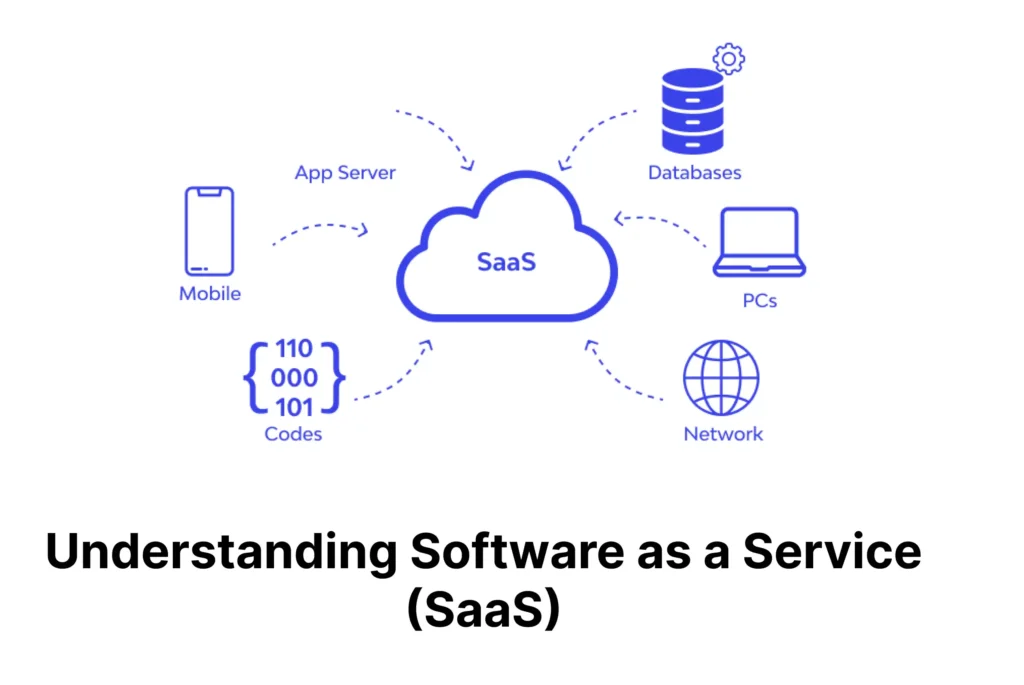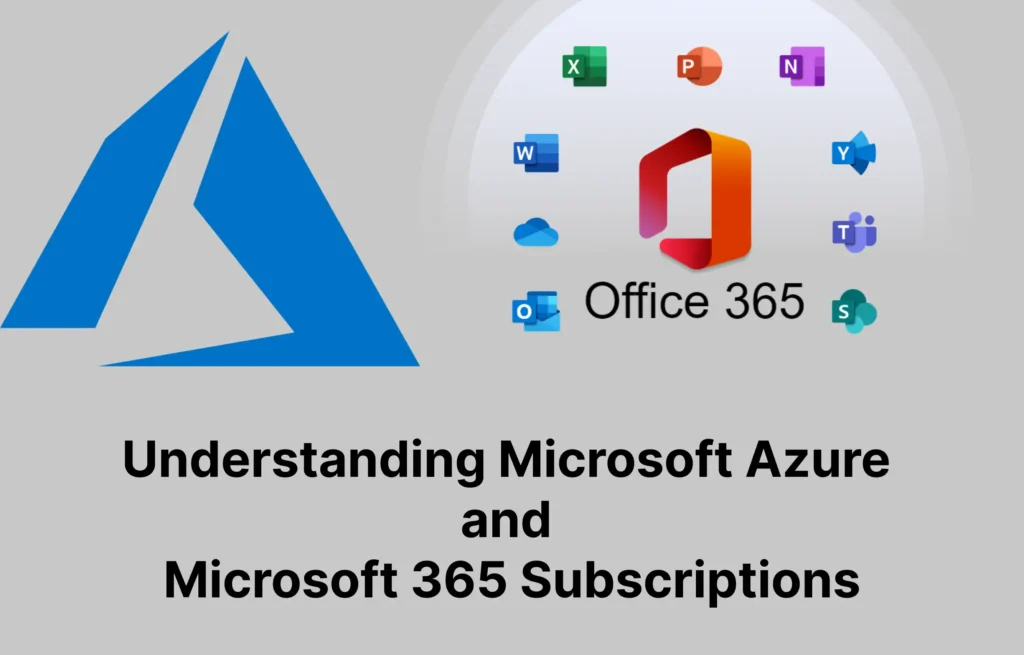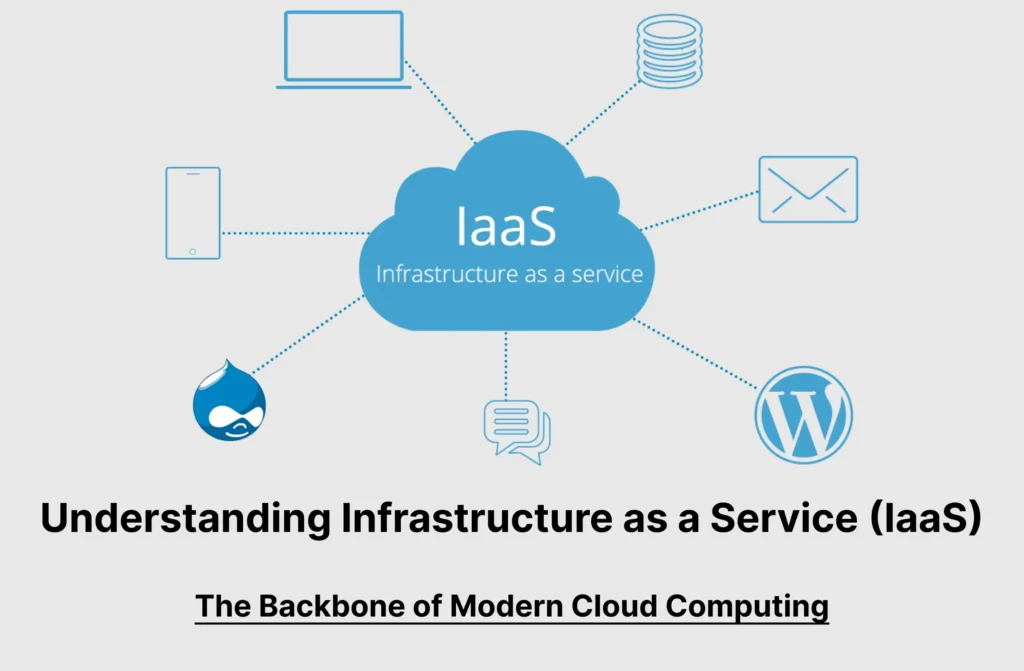Software as a Service (SaaS). Discover the transformative power of Software as a Service (SaaS) in the modern business landscape. Explore its evolution, key benefits like cost efficiency and scalability, and the challenges businesses face when adopting SaaS. Learn about future trends, including AI integration and industry-specific solutions, that promise to redefine the SaaS industry. Stay informed about how SaaS can enhance business operations, improve collaboration, and drive innovation.
Explore More Topics in: Technology Solutions
Also Read:
- Understanding Microsoft Azure and Microsoft 365 Subscriptions: A Comprehensive Guide
- Exploring Microsoft Azure: Services, Free Tier, and Subscription Options
- Understanding Platform as a Service (PaaS): A Comprehensive Guide
- Understanding Infrastructure as a Service (IaaS): The Backbone of Modern Cloud Computing

Table of Contents
Introduction to Software as a Service (SaaS)
Software as a Service (SaaS) represents a paradigm shift in the way software is delivered and consumed. Unlike traditional software models that require physical installation on individual devices, SaaS leverages the power of the internet to provide access to applications via web browsers. This delivery model has revolutionized the software industry, offering significant advantages in terms of cost, scalability, and accessibility.
The evolution of SaaS can be traced back to the early days of Application Service Providers (ASPs) in the late 1990s, which laid the groundwork for web-based software delivery. However, it wasn’t until the advent of cloud computing that SaaS truly began to flourish. By hosting software on cloud servers, providers can offer a more reliable, scalable, and efficient service to users worldwide.
Several core principles underpin the SaaS model, including cloud computing, multi-tenancy, and subscription-based access. Cloud computing enables the delivery of services over the internet, eliminating the need for local infrastructure and reducing maintenance burdens. Multi-tenancy allows multiple users to share the same application infrastructure while maintaining data isolation and security. Subscription-based access provides a flexible pricing model where users can pay for the services they need on a monthly or annual basis.
The primary components of SaaS include the application itself, the cloud infrastructure it runs on, and the service management layer that ensures seamless operation and support. This model has gained significant traction in recent years due to its ability to provide faster deployment times, lower upfront costs, and continuous updates and improvements without user intervention.
In today’s digital landscape, SaaS is becoming increasingly significant. Businesses of all sizes are adopting SaaS solutions to streamline operations, enhance collaboration, and drive innovation. As technology continues to evolve, the SaaS model is expected to play a pivotal role in shaping the future of software delivery and consumption.
Key Benefits of SaaS for Businesses
Software as a Service (SaaS) offers numerous advantages that make it an attractive option for businesses of all sizes. One of the primary benefits is cost efficiency. Unlike traditional software that requires significant upfront investment in licenses and hardware, SaaS operates on a subscription model, allowing businesses to pay as they go. This not only reduces initial costs but also enables predictable budgeting and financial planning.
Scalability is another significant benefit of SaaS. Businesses can easily scale their usage up or down based on their needs without worrying about capacity planning or additional infrastructure investments. This flexibility is particularly beneficial for growing companies or those with fluctuating demands.
Accessibility is a standout feature of SaaS solutions. With applications hosted in the cloud, users can access the software from any device with an internet connection. This accessibility fosters a more flexible and mobile workforce, enabling employees to work from various locations and improving overall productivity.
Additionally, SaaS reduces the need for in-house IT infrastructure and support. Maintenance, updates, and security are managed by the service provider, freeing up internal resources and reducing ongoing maintenance costs. This ease of management ensures that businesses can stay up-to-date with the latest features and security patches without the need for manual intervention.
Improved collaboration is another key advantage of SaaS. Many SaaS applications come with built-in collaboration tools that allow team members to work together in real-time, share documents, and communicate seamlessly. This can lead to enhanced productivity and more efficient workflows.
There are numerous real-world examples of businesses successfully leveraging SaaS solutions. For instance, companies like Slack and Zoom have revolutionized workplace communication and collaboration, while Salesforce has transformed customer relationship management. These examples underscore the transformative potential of SaaS in driving business growth and efficiency.
Challenges and Considerations in Adopting SaaS
Adopting Software as a Service (SaaS) introduces a range of challenges and considerations that businesses must carefully evaluate. One of the foremost concerns is data security and privacy. As SaaS solutions typically involve storing sensitive data on external servers, businesses must ensure that their chosen SaaS providers implement robust security measures. This includes encryption, regular security audits, and compliance with regulations such as GDPR or HIPAA, depending on the industry.
Another significant consideration is the dependency on internet connectivity. SaaS applications require a stable and high-speed internet connection for optimal performance. Any disruption in connectivity can lead to downtime, affecting business operations. Companies must assess their internet infrastructure and have contingency plans in place, such as backup connections, to mitigate potential disruptions.
Customization limitations can also pose challenges for businesses using SaaS solutions. While many SaaS platforms offer configurable options, they may not provide the level of customization that on-premises solutions can. This can be particularly problematic for businesses with unique processes or specific requirements. Evaluating the customization capabilities of a SaaS solution during the selection process is crucial to ensure it aligns with business needs.
Vendor reliability is another critical factor. Businesses must thoroughly evaluate potential SaaS providers, examining their track record, customer reviews, and financial stability. Reliable vendors are more likely to offer consistent service and support, reducing the risk of disruptions. Service Level Agreements (SLAs) are essential in this regard, as they define the expected service performance and the penalties for failing to meet those standards.
Lastly, the risk of vendor lock-in must be considered. Switching SaaS providers can be complex and costly, particularly if there is significant data migration involved. To mitigate this risk, businesses should seek providers that offer data portability and avoid proprietary technologies that complicate transitions. Thoroughly reviewing contract terms and ensuring clarity on data ownership and exit strategies are also vital steps.
By addressing these challenges through careful vendor evaluation, robust data protection measures, and strategic planning, businesses can navigate the complexities of adopting SaaS solutions and reap their numerous benefits.

Future Trends and Innovations in SaaS
As the landscape of Software as a Service (SaaS) continues to evolve, several emerging trends and innovations are poised to redefine the industry. A primary driver of this change is the increasing integration of artificial intelligence (AI) and machine learning (ML) into SaaS platforms. These technologies enable more sophisticated data analysis, automation, and personalized user experiences, thereby enhancing the overall value proposition of SaaS solutions. For instance, AI-powered chatbots and virtual assistants are becoming standard features, streamlining customer support and improving operational efficiency.
Another notable trend is the rise of industry-specific SaaS solutions. Unlike generic platforms, these tailored services address the unique needs and challenges of particular sectors, from healthcare and finance to education and manufacturing. This specialization allows businesses to leverage software that aligns closely with their operational demands, leading to greater efficiency and effectiveness. As industries become more digitized, the demand for customized SaaS offerings is expected to grow, further diversifying the market.
User experience (UX) is also becoming a focal point in SaaS development. With an increasing number of options available, users prioritize intuitive, seamless, and engaging interfaces. Companies are investing heavily in UX research and design to create platforms that are not only functional but also enjoyable to use. Enhanced UX is crucial in driving user adoption and retention, which are key metrics for the success of any SaaS product.
Advancements in cloud technology are set to have a significant impact on the evolution of SaaS. Edge computing and serverless architectures are two innovations that stand out. Edge computing reduces latency by processing data closer to the source, which is particularly beneficial for applications requiring real-time responsiveness. Serverless architectures, on the other hand, offer scalability and flexibility by allowing developers to run code without managing underlying infrastructure. These advancements promise to make SaaS platforms more robust, efficient, and adaptable to changing business needs.
In conclusion, the future of SaaS is bright, driven by continuous technological advancements and an ever-increasing emphasis on user-centric design. As AI and ML become more integrated, industry-specific solutions proliferate, and cloud technologies advance, SaaS will remain a pivotal component of the modern business landscape. These trends not only promise to enhance the functionality and accessibility of SaaS platforms but also ensure their ongoing relevance in an increasingly digital world.





Pingback: Understanding Microsoft Azure and Microsoft 365 Subscriptions: A Comprehensive Guide - BYQUS – Browse Your Quick Utility & Stories